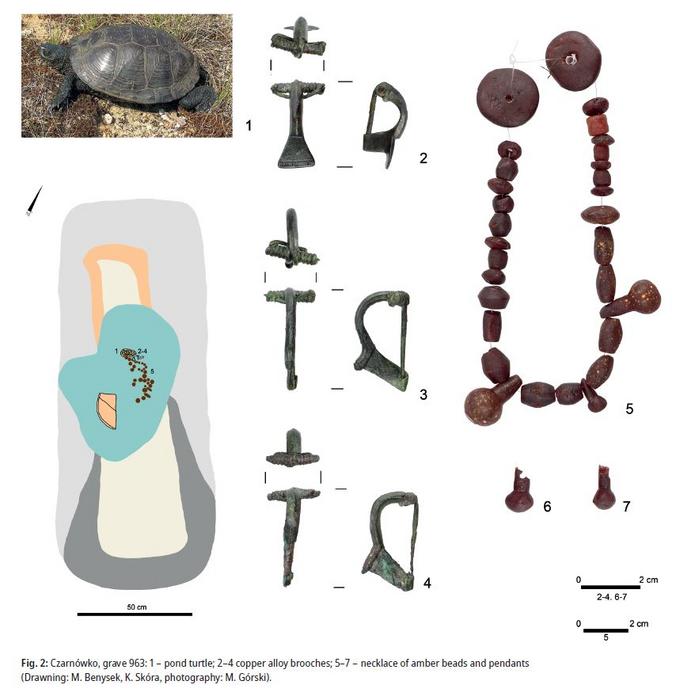 WARSAW, POLAND—According to a statement released by De Gruyter, a new study of an Iron Age child’s burial discovered in 2010 in northern Poland’s Czarnówko site suggests that the turtle remains occasionally found in ancient graves in the region are the result of post-burial disturbances, and not a funeral tradition of the Wielbark culture. It had been previously thought that the remains of a European pond turtle (Emys orbicularis), found in the grave near the child’s skull, may have been placed there deliberately as part of the burial, or may have shifted there when the grave was disturbed by looters in antiquity. Although archaeological evidence suggests that turtles were sometimes kept as pets by the people of the Wielbark culture, there is no evidence that they were eaten or used in burial practices, said Kalina Skóra of the Polish Academy of Sciences. It is possible, she noted, that this turtle had fallen or crawled into the looters’ trench and was then unable to escape the burial. “It is hardly a coincidental association that in all archaeologically recorded cases, the turtle remains were found in graves opened some time after burial, that is with traces of post-funeral interference,” Skóra concluded. Read the original scholarly article about this research in Praehistorische Zeitschrift. To read about genetic analysis of individuals buried 5,000 years ago in a mass grave in Poland, go to "We Are Family."
WARSAW, POLAND—According to a statement released by De Gruyter, a new study of an Iron Age child’s burial discovered in 2010 in northern Poland’s Czarnówko site suggests that the turtle remains occasionally found in ancient graves in the region are the result of post-burial disturbances, and not a funeral tradition of the Wielbark culture. It had been previously thought that the remains of a European pond turtle (Emys orbicularis), found in the grave near the child’s skull, may have been placed there deliberately as part of the burial, or may have shifted there when the grave was disturbed by looters in antiquity. Although archaeological evidence suggests that turtles were sometimes kept as pets by the people of the Wielbark culture, there is no evidence that they were eaten or used in burial practices, said Kalina Skóra of the Polish Academy of Sciences. It is possible, she noted, that this turtle had fallen or crawled into the looters’ trench and was then unable to escape the burial. “It is hardly a coincidental association that in all archaeologically recorded cases, the turtle remains were found in graves opened some time after burial, that is with traces of post-funeral interference,” Skóra concluded. Read the original scholarly article about this research in Praehistorische Zeitschrift. To read about genetic analysis of individuals buried 5,000 years ago in a mass grave in Poland, go to "We Are Family."
New Thoughts on Turtle Remains in an Iron Age Burial in Poland
